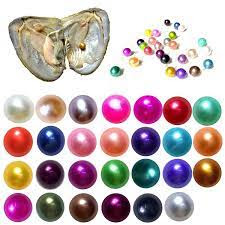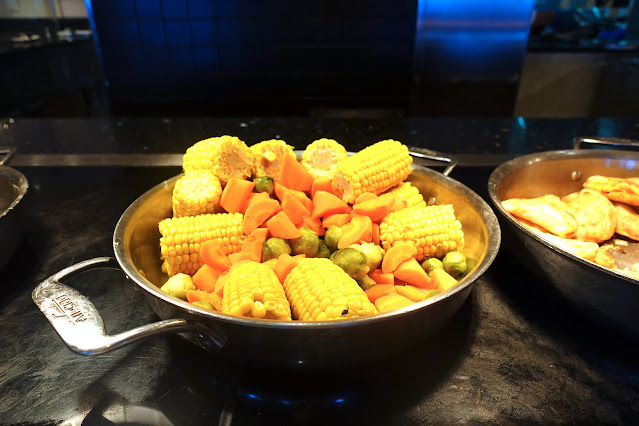 Tomorrow we arrive in French Polynesia and will remain in this region for several days. I went to Papeete and Rangiroa in the 1990s, and for my nostalgia Tuesday will explain why. On 21 August 2008 I said:
Tomorrow we arrive in French Polynesia and will remain in this region for several days. I went to Papeete and Rangiroa in the 1990s, and for my nostalgia Tuesday will explain why. On 21 August 2008 I said:
The experiments went well, and we learned that not only could we control the growth conditions on land, but that the pearls grew at twice the rate of the traditionally cultivated version. The Governor was able to gain additional funding until the Orient market crashed, so the project was abandoned. But the attraction of growing a product that could be sold for $10 or $100/oyster, as opposed to $0.25 for just the eating type, remained in my memory. Neil went on to found a mariculture company growing and marketing Kona Kampachi, a desirable sashimi delicacy. He deserves a more complete blog posting, and someday, I'll do this.
I thus formed an international team of marine biotechnologists and marketers. Grant Burgess of Heriot-Watt University, associate editor of the Journal of Marine Biotechnology (JMB), began searching for marine algae which could provide the range of colors. Next to his office was the Scotch Professor of the country and on the other side was a biologist who held membership in the Royal and Ancient Club, which supervised over the Saint Andrews golf course structure. We usually held annual meetings in late August (the only period when the weather is halfway tolerable there) when the world’s largest arts festival is held in Edinburg. Unfortunately, Grant, who grew up in Edinburg, just moved to Newcastle, where they are allowed to do human cloning, not an interest of his, but, nevertheless intriguing with respect to Chapter 2 of SIMPLE SOLUTIONS for Humanity. Aside from coal, what else is there in Newcastle?
In usual attendance was Tadashi Matsunaga, former editor of the Journal of Marine Biotechnology, and a vice-president at the Tokyo University of Agriculture and Technology, who spent a sabbatical at the University of Hawaii as the first International Professor for the Blue Revolution. We also needed to use some genetic engineering to obtain the right colored pearl. Plus, Professor Matsunaga has some ideas on how to artificially grow pearls.
It just so happened that several towns were consolidating into one city, Shima, so Mayor Takeuchi (right) ran against the other mayors, and had on his campaign platform a new industry in colored pearls. He barely won, it is said because he had the only new idea. My first dinner with him was an incredible French meal, the second, a classical Japanese kaiseki, the third, a teppan yaki of lobster, steak, and foie gras over bottles of bourdeaux and, on my latest visit, barbecued Matsusaka beef, said to be better (and more expensive) than Kobe beef. Matsusaka, also spelled Matsuzaka, is adjacent to Shima City. I'm trying to sell the concept to Ago/Shima, but, because of honor and territorial cultural imperative, perhaps, Mayor Takeuchi always picked up the tab. He'll love Zippy's in Hawaii, and so will Chisako, wife, communicator (she teaches English), inspiration and balance to the Mayor.
If you someday see pearls of intense hue in your jewelers, chances are that this team had something to do with the introduction. The question is whether we will be doing this using the traditional oyster farm or just a laboratory growth chamber.
Another minor incident had to do with coconut crabs.
For example, in Rangiroa Tahiti, the last time I went there, the outhouse was, well, outside the house. I had to go one night, and ran into a coconut crab. To quote:
The coconut crabs or “Kaveu”in Tahitian, also known as “robber crabs” are the biggest terrestrial arthropod in the world! Adults of this species weigh up to 4 kg and size up to 1.3 ft. But some people say that they had observed specimens weighing more than 17 kg!
17 kg is 37.5 pounds. They are also called robber crabs, for they get into trash cans and eat birds. It is said that Amelia Earhart was consumed by coconut crabs.How large is a 37.5 pound crab? Well, see one attacking a trash can. The Hawaii record for a Samoan Crab is a little more than 7 pounds.
But the cruise goes on, and today for lunch was the Odyssey Food Festival. Various stations on the Patio and in the Colonnade. Not sure if this was smart, for you had to get your own food, and passing from the Patio to the Colonnade, there was a heavy door...and the ship was moving over 6 feet of surf.
The cocktail for the day was some concoction with an elderflower liqueur.The Colonnade featured dining under the stars.
But it was still sunset.
The wines were Australian from De Bortoli, the white a semillion/sauvignon blanc, and the red a Shiraz plus. They can be bought for around $6/bottle in Australia. They are both excellent.
The dinner started with French Onion Soup and foie gras, followed by a prime rib and snapper.
Walked/danced 40 minutes in place as explained yesterday reaching 4076 steps.
-



























Comments
Post a Comment